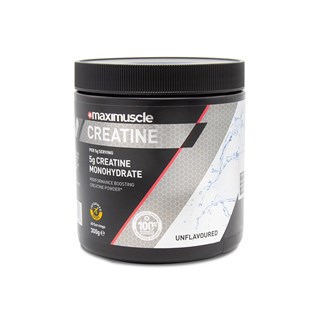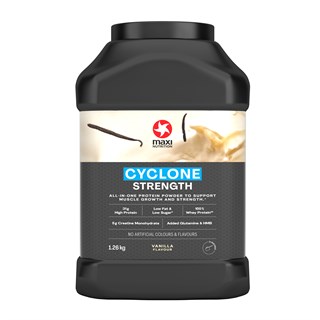Turning training into performance
Understanding what a diet for rugby should be, is one thing, but putting all that theory into something that is useful to you and your goal, is something quite different. Not to mention, how you turn all those macronutrient and calorie numbers into real food. Oh and not forgetting, real food that you are prepared to eat. I’m Gareth Nicholas, Performance Nutritionist at Maxinutrition and here are some of my top tips and recipes to support training and be match ready.
YOUR DAILY DIET
Your daily energy intake should be a reflection of your energy expenditure; input versus output. This needs to be balanced off against your desired goal, for example, creating a calorie deficit, if you are trying to lose weight; or a calorie excess, if the goal is to increase muscle mass.
MACRONUTRIENTS
Your total daily energy intake should be devided into the macronutrients – carbohydrate, protein & fat. Detailing where those calories are coming from, once again, this should be based on your training and goal. A typical macro split for rugby would be 50/30/20 – that’s 50% carbohydrate, 30% protein and 20% fat. As an example, lets say you weighed 80 kg, training 3-5 times per week and wanted to maintain your weight but improve performance, your dietary intake should therefore be approximately 2863 kcals per day. With the macro split being 358g carbs, 215g protein and 64g fat.
THEORY VS REALITY
Taking the figures from above, although theoretically correct, in the real world there are many variables. The biggest variable is you, your stature, playing position and goal. From those theoretical numbers, calculated using the Harris-Benedict nutritional formulation, I would make some tweaks to the macros based on nutrient digestion and utilisation. For example, 215g of protein for an 80 kg individual equates to 2.7g per kg of body weight. That’s a lot of protein! Latest scientific recommendations is that single protein feeds should be 0.25g of protein per kg of body weight, therefore, 20g for an 80kg individual. If then you could manage a dietary intake of 5-6 meals a day, you would be consuming up to 120g protein per day, more like 1.5g protein per kilogram of body mass. This is probably more realistic, but what does 20g of protein look like in food? A good protein for rugby should be between 1.4 – 2.2g protein per kg of body weight.
Here’s a list of foods high protein foods:
- 3 large eggs is 18g protein
- Chicken breast (100g) contains 28g protein
- Salmon fillet (85g) contains 17g protein
- Protein powders are usually between 18-35g protein
- Steak (251g) contains 62g protein
- 1/2 can of baked beans contains 10g protein
- 100g cottage cheese contains 9.5g protein
- 200ml milk contains 7g protein
- A large handful of mixed nuts (50g) contains 10g protein
- Protein bars, such as Maximuscle protein bars (45g) contain 15g protein
Try to vary your dietary protein sources and the key is to spread them out throughout the day.
I am sure that you are already aware of the above protein foods and you probably have a better view of what good nutrition looks versus bad, but the limitation is often our skills in the kitchen or even the desire to take the time in food preparation. Here is a list of some of my favourite recipes, split by meal, to help you get started:
Breakfast ideas
- Quinoa Porridge https://www.maximuscle.com/nutrition/recipes/Quinoa-porridge/
- Breakfast Fritters https://www.maximuscle.com/nutrition/recipes/Breakfast-Fritters/
- Breakfast Pancakes https://www.maximuscle.com/nutrition/recipes/Yoghurt-Blueberry-Breakfast-Pancakes/
- Protein Zoats https://www.maximuscle.com/nutrition/recipes/Protein-Zoats-MaxiNutrition-Recipe/
Lunch ideas
- Spiced pumpkin soup https://www.maximuscle.com/nutrition/recipes/7/
- Spicy steak burrito https://www.maximuscle.com/nutrition/recipes/Spicy-Steak-Burrito/
- Tuna steak with cucumber salsa https://www.maximuscle.com/nutrition/recipes/Tuna-Steak-with-Cucumber-Salsa/
- Avocado and egg on toast https://www.maximuscle.com/nutrition/recipes/Avocado-and-Poached-Egg-Toast-MaxiNutrition-Recipe/
Evening Meal ideas
- Chilli seafood and vegetable linguine https://www.maximuscle.com/nutrition/recipes/Chilli-Seafood-and-Vegetable-Linguine-MaxiNutrition-Recipe/
- Prawn Stir Fry https://www.maximuscle.com/nutrition/recipes/3/
- Mushroom Risotto https://www.maximuscle.com/nutrition/recipes/Mushroom-Risotto/
- Healthy Chilli https://www.maximuscle.com/nutrition/recipes/Healthy-Chili-Recipe/
Snack ideas
- Rock Road Brownies https://www.maximuscle.com/nutrition/recipes/Rocky-Road-Brownies/
- Protein Banana Bread https://www.maximuscle.com/nutrition/recipes/protein-banana-bread/
- Ginger Protein Balls https://www.maximuscle.com/nutrition/recipes/Gingerbread-Protein-Balls/
- Sweet Potato Brownies https://www.maximuscle.com/nutrition/recipes/Sweet-Potato-Brownies/
For more great recipes check out the recipe section on the website.
Try to be adventurous, make your nutrition fun and enjoyable. Test yourself; try out recipes with ingredients that you are new to you. Batch cooking or joining the Sunday prep team, will help save time and mean that you always have good food to hand. Understanding the finer details, all the numbers and macronutrients is great, but the real difference comes in the food you cook and eat. It will take time and some dedication, but it will all be worth it.





















